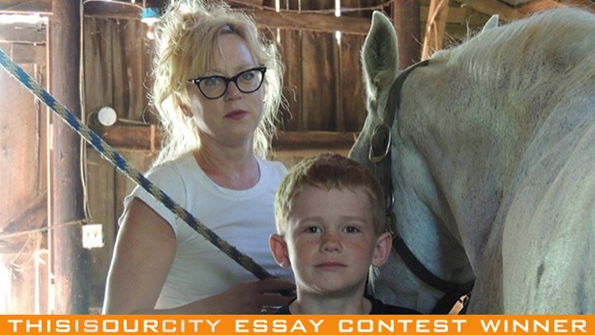The National Institutes of Health has just given the company Senestech a grant of $1.1 million as its owner, Loretta Mayer, works to figure out a way to get New York City subway rats on the Pill. Subway rats, says Mayer, can find solid food easily, but are constantly on the search for liquids. Paul Jones, the manager of NYC transportation authority trash disposal, notes that rats, like most New Yorkers, crave caffeine; their favorite drinks, according to Jones, include Red Bull and (what else?) lattes. Soon there’ll be something else on the menu of the underground cafés that are the subway system: birth control smoothies. Mayer’s company is tweaking the formula to appeal to New York rats’ palates; while Asian rats have taken their birth control with shots of roasted coconut, dried fish, and beer, New York City rats seem to prefer pepperoni.

It has set off a firestorm of controversy, coming in the wake of Mayor Bloomberg’s unsuccessful shame-campaign against underground rat pregnancies. One poster shows a hairless rat pup, its face contorted with grief, with the caption, “I’m six times more likely to get crushed by the 7 train because you had me in the subway!” Other rat constituents expressed frustration over the proposed bans on sweet beverages larger than 16 ounces. “That Bloomberg,” fumed one midtown rat, “does he even realize that by cutting into the humans’ freedom to super-size, he stops that trickle-down by which we rats survive?”
Handed down from City Hall, the rat contraceptive mandate has ignited even more ire from many different quarters. The Catholic Archdiocese of New York condemned the move, and many prominent evangelical rats have joined them–as Amy Frykholm points out in the Christian Century, evangelical rats appear to be “more in tune with Catholic teaching than Catholics rats are.” Many have declared it a question of religious liberty. “Health officials in China have been giving rats food-flavored birth control pills for years, and Joe Biden actually sympathizes with this campaign of forced sterilization,” says one evangelical leader who asked that he not be named. “Is this really the model we want to follow?”
“The effective separation of rat sex from rat procreation may be one of the most important defining marks of our age—and one of the most ominous,” says Albert Mohler, president of the flagship school of the Southern Baptist Convention. The New York Times quoted Mohler warning evangelical rats to be wary of the “contraceptive culture,” which regards baby rats as “impositions to be avoided rather than as gifts to be received, loved, and nurtured.” Mohler insists that people and rats of conscience must protect the freedom of rats follow the command—or blessing—in Genesis: “be fruitful and multiply.”
Meanwhile, there’s another issue that many people of faith haven’t considered: the fact that the rat contraceptives may, in fact, prevent a fertilized egg—a tiny rat embryo—from implanting in the mother rat’s uterus, meaning that what’s happening looks to some more like an early abortion than contraception. This potentially ‘abortifacient’ effect bothers the consciences of many, who insist that the difference between contraception and abortifacient is crucial: “It’s an important distinction, both linguistically and scientifically,” says Karen Swallow Prior, professor of English at Liberty University and a contributor to both the Atlantic and Christianity Today, who also serves on the Faith Advisory Council of the Humane Society of the United States: “Whatever ambiguities persist around the rat birth control smoothie in its various flavors, it’s time to start facing them honestly,” she wrote in The Atlantic.
While most evangelicals are at least able to agree upon condoms as a morally licit choice in family planning, male rats are not eager to accept them, complaining that the barrier method interferes with intimacy. Enter Bill Gates, who recently announced a startup grant of $100,000 to the person who designs “the next generation rat condom that significantly preserves or enhances pleasure” and promotes “regular use.” If successful, the measure would not only prevent unintended rat pregnancies, but also help prevent the spread of infection.
Still, people of faith are divided. While some evangelicals are weighing the possible merits of making contraceptives available even to unmarried rats, others, like Matthew Lee Anderson, argue that the move would be a concession that evangelicals should simply not be willing to make, suggesting that it moves against a “consistent biblical ethic of sexuality”; this puts him at odds with the National Association of Evangelicals, which stated that “while we never want to promote or condone sexual immorality among rats [,] we are told that contraceptives can reduce abortions and we want to stop abortions.” Jenell Williams Paris, professor of anthropology at Messiah College, agrees: “Churches discussing contraception with single rats isn’t about giving up. It’s about being in a relationship with them.”
Tim Keller, of Redeemer Presbyterian Church in New York City, simply urges more Christian rats to move into the city in order to be a part of shaping rat culture. “We must love the rats of our cities,” he said, “because in the cities you can influence the rats that have the most impact on the world; the rats that shape culture.” Perhaps that is the most hopeful way forward—through loving engagement and honest dialogue over pepperoni (or coconut and dried fish) smoothies—whatever our various convictions on contraception, or the politics and policies surrounding it.
Like this:
Like Loading...
 My friend Karen Swallow Prior has an award-winning essay up at Christianity Today’s This is Our City project called “How I Learned to Love my Literal Neighbor.” I told her it reminded me of this old Peanuts strip:
My friend Karen Swallow Prior has an award-winning essay up at Christianity Today’s This is Our City project called “How I Learned to Love my Literal Neighbor.” I told her it reminded me of this old Peanuts strip: Read it all here. And follow Karen on Twitter while you’re at it: @lovelifelitGod
Read it all here. And follow Karen on Twitter while you’re at it: @lovelifelitGod





